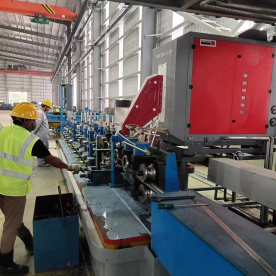[Ferrit]A Comprehensive Guide to Understanding Ferrit: Benefits, Uses, and Its Role in Modern Technology
News 2024-8-8

A Comprehensive Guide to Understanding Ferrit: Benefits, Uses, and Its Role in Modern Technology
Ferrit, often referred to as ferrite, is a type of ceramic compound composed primarily of iron oxide blended with metallic elements such as zinc and nickel. This unique material has garnered attention in various industries due to its magnetic properties and its utility in electrical and electronic applications. In this article, we will explore the different types of ferrit, their benefits, applications, and how they are shaping modern technology.
Understanding Ferrit
At its core, ferrit is characterized by its crystalline structure, which influences its magnetic behavior. Ferrites are generally divided into two main categories: soft ferrites and hard ferrites. Soft ferrites, such as manganese-zinc (MnZn) and nickel-zinc (NiZn) ferrites, are known for their ability to exhibit high magnetic permeability and low coercivity. These properties make them ideal for high-frequency applications like inductors, transformers, and electromagnetic interference (EMI) suppression. On the other hand, hard ferrites (such as barium ferrite) have high coercivity and are used in permanent magnets found in various devices, from speakers to electric motors.
Benefits of Ferrit
Ferrit exhibits several advantages that support its growing use across different sectors:

A Comprehensive Guide to Understanding Ferrit: Benefits, Uses, and Its Role in Modern Technology
2. **Temperature Stability**: Ferrit materials are known for their stability over a wide temperature range. This characteristic is crucial for applications that involve varying temperatures, such as automotive electronics and industrial machinery.
3. **Low Energy Loss**: Soft ferrites have a significant advantage in that they exhibit low energy losses at high frequencies. This attribute is particularly beneficial in applications that require high efficiency, such as power supplies and other electrical components.
4. **Corrosion Resistance**: Ferrit materials often have good corrosion resistance, which extends their lifespan in demanding environments. This makes them valuable for use in various industrial applications.
5. **Cost-Effectiveness**: The raw materials needed to create ferrit are generally abundant and inexpensive, contributing to the cost-effectiveness of ferrit-based products.

A Comprehensive Guide to Understanding Ferrit: Benefits, Uses, and Its Role in Modern Technology
The versatility of ferrit allows it to be utilized in a multitude of applications:
1. **Transformers and Inductors**: Soft ferrites are widely used in the manufacturing of transformers and inductors due to their high magnetic permeability and low losses. These components are essential in electrical circuits for energy transfer and storage.
2. **Electromagnetic Interference (EMI) Suppression**: Ferrite cores are frequently used in EMI suppression applications, helping to prevent unwanted electromagnetic interference in sensitive electronic equipment.
3. **Magnetic Sensors**: Ferrit materials are also used in magnetic sensors, which detect changes in magnetic fields for various applications, including automotive and industrial systems.
4. **Permanent Magnets**: Hard ferrites are commonly found in permanent magnets used in speakers, motors, and magnetic separation equipment. Their durability and magnetic strength make them suitable for these applications.
5. **Data Storage**: Ferrites are integral to certain types of data storage devices, such as magnetic tape and disk drives, where they help manage the magnetic properties necessary for information storage.
The Future of Ferrit in Technology
As technology continues to evolve, the demand for efficient and reliable materials like ferrit is likely to grow. Industry trends toward miniaturization and lightweight electronics are pushing manufacturers to seek materials that offer both performance and space-saving benefits. Additionally, the increased focus on renewable energy solutions, such as electric vehicles and solar inverters, positions ferrit as a crucial component in the development of advanced electronic systems.
In conclusion, ferrit stands as a remarkable material with distinct advantages that cater to numerous applications in modern technology. Its utility in soft and hard forms allows for an extensive range of uses, from energy-efficient transformers to durable permanent magnets. As industries continue to innovate, ferrit will undoubtedly play a pivotal role in shaping the future of technology, driving advances in efficiency, sustainability, and performance across various sectors.
